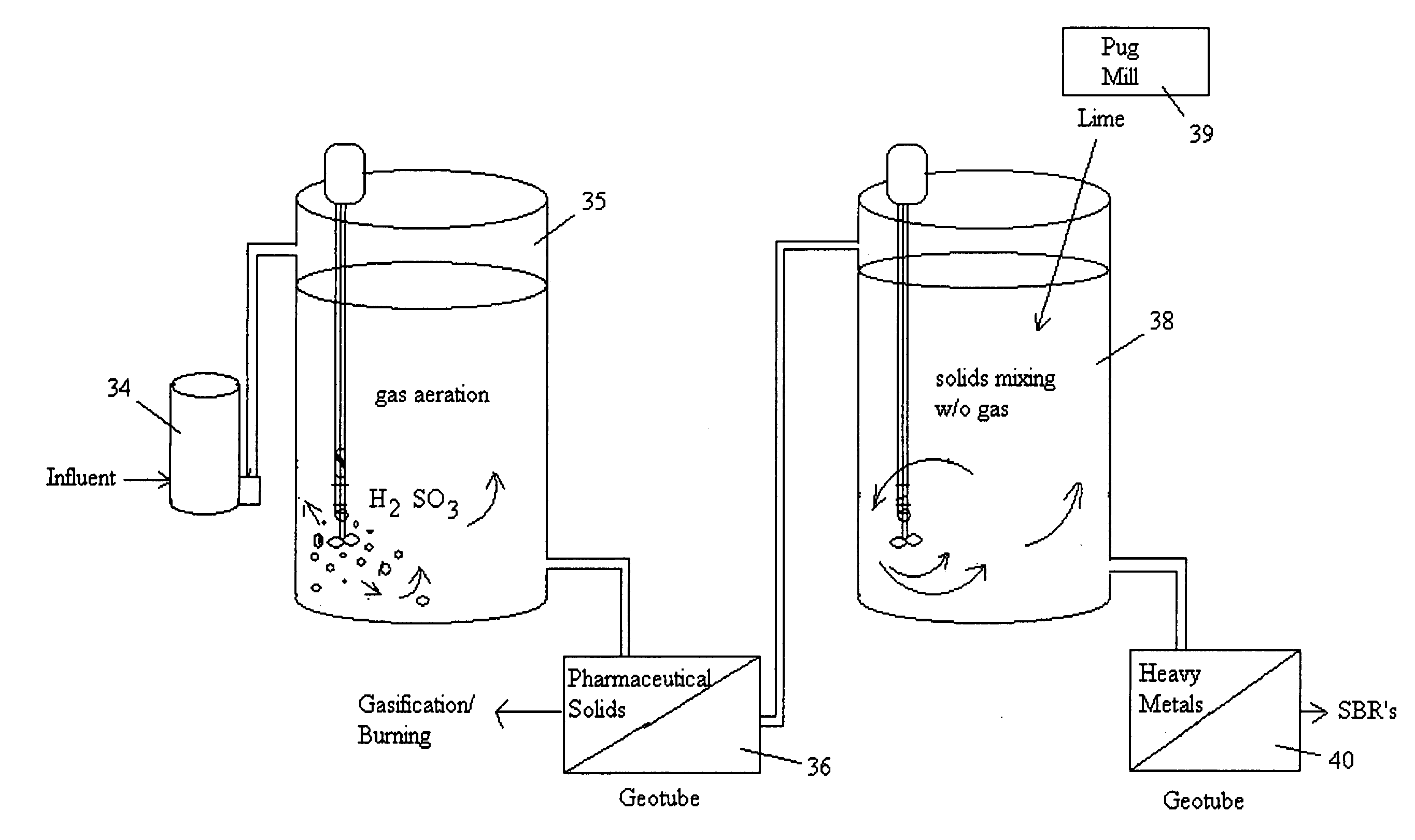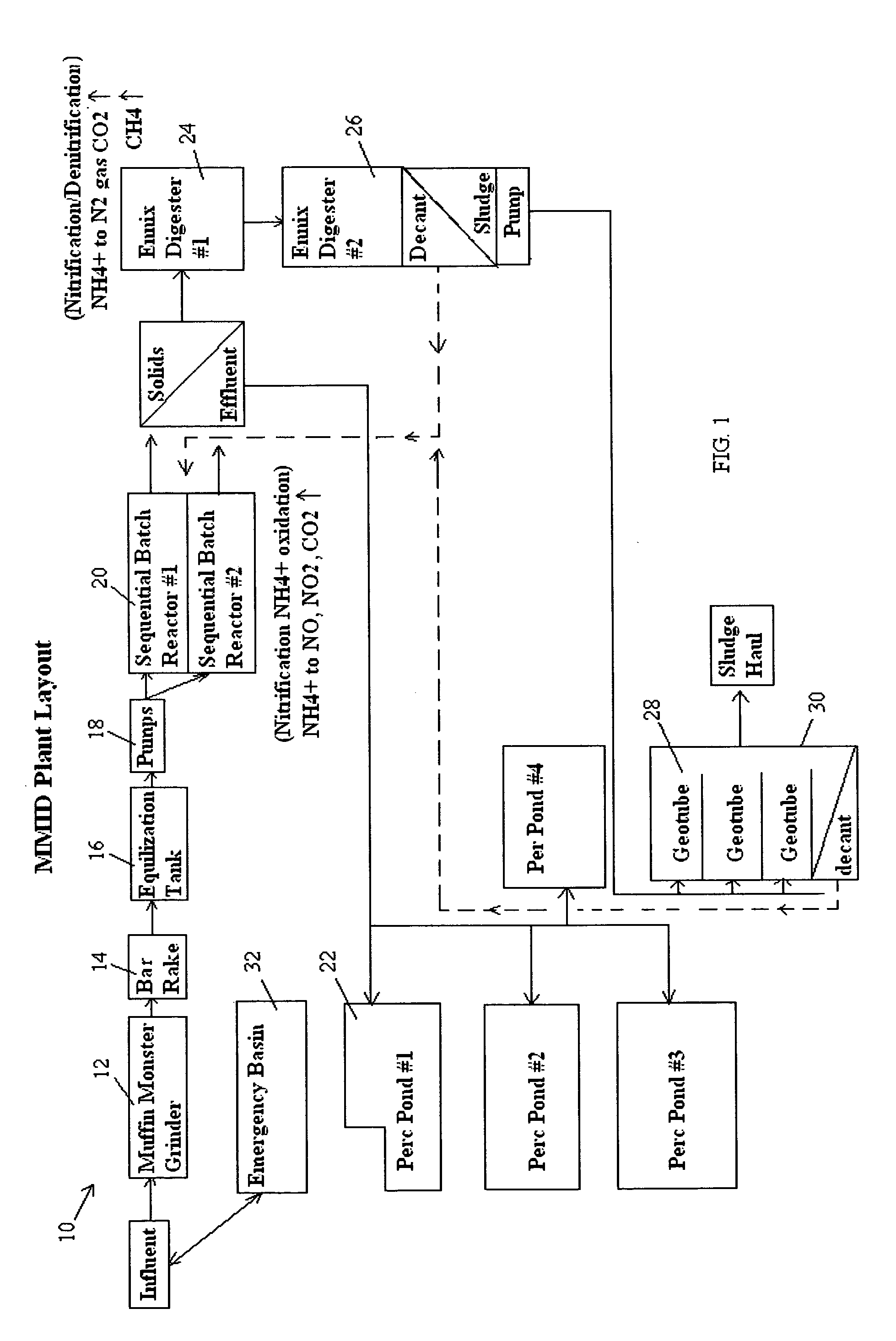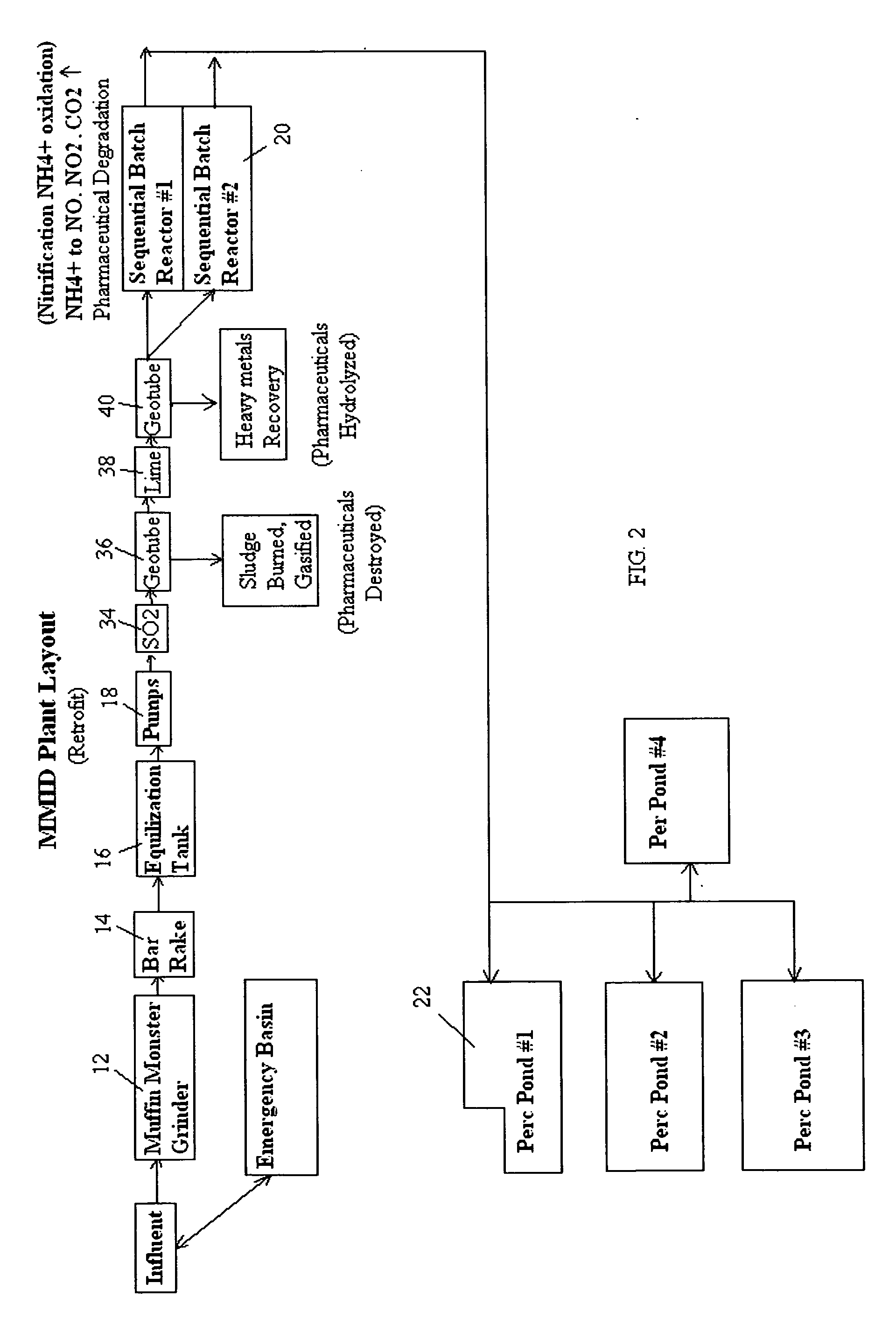Treatment method reducing wastewater influent chemical/pharmaceuticals before biological reduction to enhance sewage treatment
- Summary
- Abstract
- Description
- Claims
- Application Information
AI Technical Summary
Benefits of technology
Problems solved by technology
Method used
Image
Examples
Embodiment Construction
[0065]FIG. 1 is the plant layout of the Montalvo wastewater treatment system 10, which is a typical wastewater treatment system employing bacterial biodegradation. It comprises an influent wet well (not shown), muffin monster grinder 12, flow screen bar rake 14, equalization tank 16, three influent variable speed influent pumps 18, two sequencing batch reactors 20, and effluent decanted to four percolation ponds. The two sequencing batch reactors 20 are filled with a sludge blanket containing various anaerobic and aerobic bacteria, which require a pH of around 7.0 or above to be maintained.
[0066]The entering screened influent enters the sequencing batch reactors 20 in a mix / fill step for 15 minutes under anaerobic conditions in an anoxic zone for denitrification to take place. Where oxygen is depleted, heterotrophic bacteria respire nitrate as a substitute terminal electron acceptor. Denitrification generally proceeds through some combination of the following intermediate forms:
NO3−...
PUM
 Login to View More
Login to View More Abstract
Description
Claims
Application Information
 Login to View More
Login to View More - R&D
- Intellectual Property
- Life Sciences
- Materials
- Tech Scout
- Unparalleled Data Quality
- Higher Quality Content
- 60% Fewer Hallucinations
Browse by: Latest US Patents, China's latest patents, Technical Efficacy Thesaurus, Application Domain, Technology Topic, Popular Technical Reports.
© 2025 PatSnap. All rights reserved.Legal|Privacy policy|Modern Slavery Act Transparency Statement|Sitemap|About US| Contact US: help@patsnap.com



